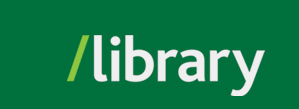Peer Review:
The process by which an academic journal passes a paper submitted for publication to independent experts for comments on its suitability and worth; refereeing.1
Many, but not all of the scholarly journals you find through the library’s databases will be peer-reviewed. If your instructor specifies that you must reference peer-reviewed articles, double-check the articles by using Ulrichsweb. Simply enter the title of the periodical into the search box on Ulrich’s homepage. Below is an example of a refereed journal title.
Source:
1. Oxford English Dictionary
Scholarly or peer-reviewed articles often have to be consulted for you to complete your assignments. The following are some characteristics of scholarly articles; refer to our guide on Types of Periodicals for more detailed explanations and example images.
Example:
This is a refereed article published in the International Journal of Athletic Therapy & Training. The author’s affiliation is clearly stated. The abstract helps readers determine the scope and relevance of the article, which ends with a list of references - allowing readers to make further investigations into the topic.
Trade periodicals allow professionals to stay up to date on the current trends and news/events in the field. They are often a good source for product and company information. Many trade publications also provide statistics, industry forecasts and book reviews. The following are some characteristics of trade/professional magazine articles; refer to our guide on Types of Periodicals for more detailed explanations and example images.
Example:
Below is a screen capture of a trade/professional journal article cautioning pharmacists about athletes who use dangerous levels of performance-enhancing drugs to help them attain their goals. The author assumes that readers are familiar with medical conditions such as cholestasis, cardiomyopathy and nephrotoxicity; these terms are not explained. This particular title includes a list of references. Note the social media icons on the left-hand panel and the advertising on the right. While the article offers advice to professionals, it also promotes products, including the publication itself.
Popular magazines can be excellent source material for information on current events. They are a primary source when it comes to popular culture, and usually feature short articles and interviews. The following are some characteristics of scholarly articles; refer to our guide on Types of Periodicals for more detailed explanations and example images.
Example:
The following is a popular magazine article written by Malcolm Gladwell that delves into the question of genetic advantage in sports. Gladwell also explores how in some cases, athletes use doping not just to enhance performance, but to prevent decline. While the article offers insight and is well-researched, this may not qualify for assignments that require you to consult peer-reviewed journals.
|
|
Scholarly journals | Trade/Professional magazines | Popular magazines |
| Example |  |
 |
 |
| Audience |
|
|
|
| Authors |
|
|
|
| Bibliography |
|
|
|
| Structure/Language |
|
|
|
| Purpose |
|
|
|
| Review Process |
|
|
|
| Publishers |
|
|
|
| Access |
|
|
|
| Appearance |
|
|
|
If you think you need to talk to a librarian, there are a variety of ways to get in contact.
Just click on the link below, chose your location and you can choose a specific librarian or select "no preference."
How to Book a Research Appointment with UFV Library
© , University of the Fraser Valley, 33844 King Road, Abbotsford, B.C., Canada V2S 7M8

